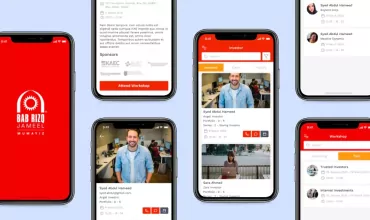Responsive Web Design – What it is and What you should know?
Table of Contents
Morgan Stanley Research suggests that more people will access the Internet and view websites on their smartphones (instead of PCs or laptops) by 2014. Already, the number of people using their mobile to browse websites and make purchases is substantial. Vigilant entrepreneurs and businesses have felt the winds of change, and they insist on developing websites that work perfectly across different browsers and devices. Responsive website development is an approach that allows developers to design websites that function perfectly on PCs, laptops, tablets, and smartphones.
Current Trends in Mobile Website Development

Concepts similar to responsive web design have been around since a while now. In fact, web design and development companies have been designing separate websites for tablets and smartphones since a couple of years. Web designers and developers around the world have used also used fluid grids and flexible content to ensure that websites perform decently on PCs as well as mobile devices. The conventional website for mobile and tablets are based on developing and deploying multiple fixed width layouts, and most people still design separate websites for separate platforms.
What Exactly is Responsive Web Design?
The idea of responsive web design was first floated by Ethan Marcotte. The tools required for developing responsive sites have been used in web development since a long time. Responsive web design is a concept that is based on using these tools in combination with media queries to build sites that actively ‘respond’ to the needs of different devices and browsers. For better understanding, you may search for responsive web design template to see how exactly it looks like.
In the introduction to Ethan Marcotte’s book Responsive Web Design, the veteran web developer Jeremy Keith talks about the impact this concept has had on mobile web designing: “The technologies existed already: fluid grids, flexible images, and media queries. But Ethan united these techniques under a single banner, and in so doing changed the way we think about web design.” This new approach to design combines JavaScript, CSS, CSS3 and media queries to create fluid website designs.
What do Responsive Websites do?
Responsive web design uses similar tools to conventional mobile web design, but it follows a different approach. Conventional mobile design believes in “graceful degradation” – changing the size and type of content and images to fit particular devices and browsers. The development of responsive web designing concentrates on adapting a single layout to the screen resolution and thereby making it possible to have a single source of content displayed perfect across devices of different sizes. As the screen size changes, the most prominent content fills the screen, while less crucial elements are pushed to the background.
Consequently, users can access the same content irrespective the type of browser and device they are using. If your website is built according to responsive web design principles, it will automatically expand, rearrange, contract and remove content on the basis of the screen size. The upshot is that you won’t have to design separate websites for different devices – a single responsive website will work well on all devices.
Benefits of Responsive Web Design
- No need to develop separate website for different devices and browsers
- No compulsion to create different pages and content for different sites
- The loading time of website decreased as users do not have to be redirected
- You have to manage just one site instead of a set of sites for different devices
- You save time and money as your purpose is served through a single website
- Your site design with be relevant to any new devices with different screen sizes
- Better user experience will promote better impression and help you make more conversions
Developing responsive website is still in its infancy, and the best practices for responsive web design are still being discovered though you may find responsive website development tutorial on the internet. Some feel that responsive design will replace the conventional mobile websites, while many others feel that both the approaches can co-exist.
Also, this type of design can be a little difficult for designers and developers new to web development, but all the effort spent on designing responsive websites is worth it. Are you planning to develop such wonderful website? Make sure that you pick an experienced and creative responsive web developer for your project.



